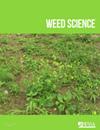探索电杂草控制的潜力:综述
IF 2.1
2区 农林科学
Q2 AGRONOMY
引用次数: 1
摘要
杂草管理是一项重大挑战,必须在全球和澳大利亚解决,因为澳大利亚的传统控制方法已经变得有限。避免机械操作减少了侵蚀,但也增加了对化学品的依赖,从而提高了除草剂的抗性。为了应对这一挑战,需要考虑其他形式的杂草管理,如电动杂草控制(电动除草)。电除草的作用是在电极接触后通过目标植物传递电流,导致其细胞爆裂,杀死植物或抑制其生长。然而,许多变量,如电力和施用速度、杂草形态和特定地点的环境条件,都会影响电动杂草控制的使用及其效果。尽管电动杂草控制很有前景,尽管它最近在全球范围内受到众多机械生产公司的欢迎,但在国际和澳大利亚使用电动杂草控制的适用性、有效性和风险仍有待彻底分析。鉴于现有的知识差距,这篇综述全面概述了电杂草控制的理论和最新进展。此外,该综述讨论了与电杂草控制相关的耐药性发展潜力和安全风险,并概述了现代机器及其在各种环境中的应用。它还强调,在广泛采用并纳入有害生物管理策略之前,需要进一步研究,以确定实施这种新的杂草控制方法的适用性和有效性。本文章由计算机程序翻译,如有差异,请以英文原文为准。
Exploring the potential of electric weed control: A review
Weed management is a significant challenge that must be addressed both globally and in Australia, where traditional methods of control have become limited. The avoidance of mechanical practices has resulted in reduced erosion but has also led to an increased reliance on chemicals and a subsequent increase in rates of herbicide resistance. To address this challenge, alternative forms of weed management, such as electric weed control (electro-weeding), need to be considered. Electric weed control functions by transferring electrical current through the target plant following electrode contact, causing its cells to burst and either killing the plant or suppressing its growth. However, a multitude of variables, such as electrical power and speed of application, weed morphology and site-specific environmental conditions, can impact the use of electric weed control and its efficacy. While electric weed control holds promise and despite its recent global popularity with numerous companies producing machinery, the applicability, efficacy, and risks of using electric weed control internationally and in Australia have yet to be thoroughly analysed. Given the existing knowledge gaps, this review provides a comprehensive overview of the theory and recent advancements in electric weed control. Additionally, the review discusses the potential for resistance development and safety risks associated with electric weed control and presents an overview of modern machines and their application in various settings. It also highlights the need for further research to determine the applicability and efficacy of implementing this new weed control method before widespread adoption and integration into pest management strategies.
求助全文
通过发布文献求助,成功后即可免费获取论文全文。
去求助
来源期刊

Weed Science
农林科学-农艺学
CiteScore
4.60
自引率
12.00%
发文量
64
审稿时长
12-24 weeks
期刊介绍:
Weed Science publishes original research and scholarship in the form of peer-reviewed articles focused on fundamental research directly related to all aspects of weed science in agricultural systems. Topics for Weed Science include:
- the biology and ecology of weeds in agricultural, forestry, aquatic, turf, recreational, rights-of-way and other settings, genetics of weeds
- herbicide resistance, chemistry, biochemistry, physiology and molecular action of herbicides and plant growth regulators used to manage undesirable vegetation
- ecology of cropping and other agricultural systems as they relate to weed management
- biological and ecological aspects of weed control tools including biological agents, and herbicide resistant crops
- effect of weed management on soil, air and water.
 求助内容:
求助内容: 应助结果提醒方式:
应助结果提醒方式:


